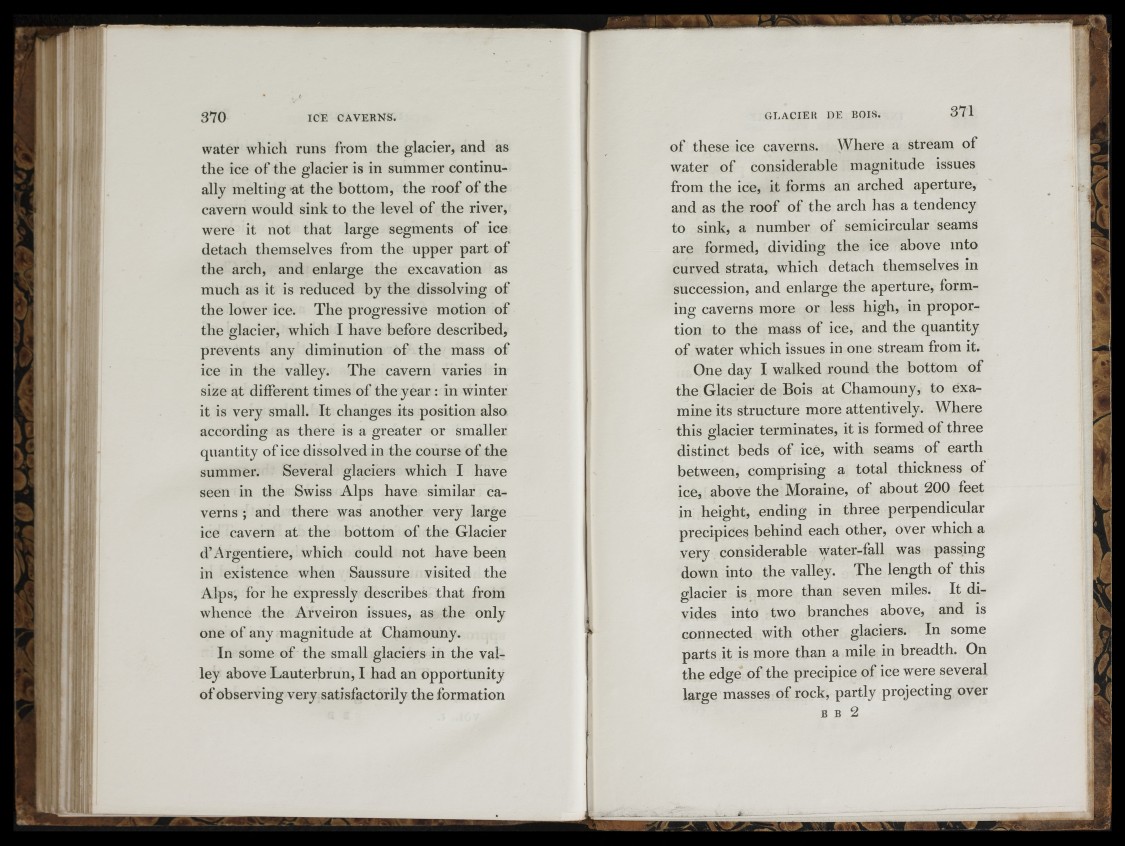
water wliich runs from the glacier, and as
the ice of the glacier is in summer continually
melting at the bottom, the roof of the
cavern would sink to the level of the river,
were it not that large segments of ice
detach themselves from the upper part of
the arch, and enlarge the excavation as
much as it is reduced by the dissolving of
the lower ice. The progressive motion of
the glacier, which I have before described,
prevents any diminution of the mass of
ice in the valley. The cavern varies in
size at different times of the y e a r: in winter
it is very small. It changes its position also
according as there is a greater or smaller
quantity of ice dissolved in the course of the
summer. Several glaciers which I have
seen in the Swiss Alps have similar caverns
; and there was another very large
ice cavern at the bottom of the Glacier
d’Argentiere, which could not have been
in existence when Saussure visited the
Alps, for he expressly describes that from
whence the Arveiron issues, as the only
one of any magnitude at Chamouny.
In some of the small glaciers in the valley
above Lauterbrun, I had an opportunity
of observing very satisfactorily the formation
of these ice caverns. Where a stream of
water of considerable magnitude issues
from the ice, it forms an arched aperture,
and as the roof of the arch has a tendency
to sink, a number of semicircular seams
are formed, dividing the ice above into
curved strata, which detach themselves in
succession, and enlarge the aperture, forming
caverns more or less high, in proportion
to the mass of ice, and the quantity
of water which issues in one stream from it.
One day I walked round the bottom of
the Glacier de Bois at Chamouny, to examine
its structure more attentively. Where
this glacier terminates, it is formed of three
distinct beds of ice, with seams of earth
between, comprising a total thickness of
ice, above the Moraine, of about 200 feet
in height, ending in three perpendicular
precipices behind each other, over which a
very considerable water-fall was passing
down into the valley. The length of this
glacier is more than seven miles. It divides
into two branches above, and is
connected with other glaciers. In some
parts it is more than a mile in breadth. On
the edge of the precipice of ice were several
large masses of rock, partly projecting over
B B 2